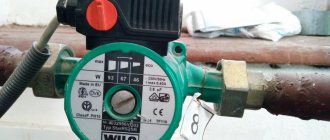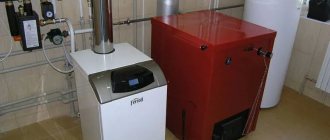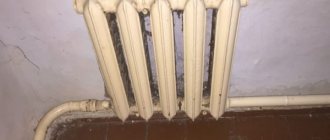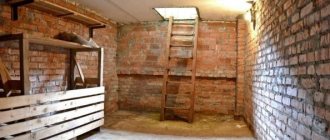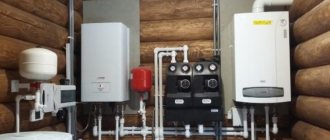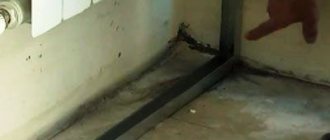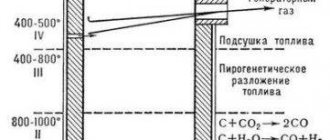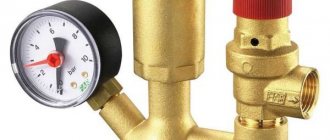The key element of the heating system is the circulation pump. With the help of this equipment, heat is evenly distributed throughout the room. Depending on the quality of the device, the water pressure and the efficiency of its heating will change.
Not all users know how to choose these devices correctly and what technical characteristics to pay attention to. At the moment, there are many manufacturers of this type of equipment. WILO circulation pumps for heating systems are in great demand among consumers.
Briefly about the Vilo company
The WILO Group is the world's leading manufacturer of pumping equipment used in households, utilities and industry. The company was founded back in 1872, when its founder, Louis Uplander, began producing hardware.
WILO is currently a leader in digital innovation. The company compares favorably with its competitors with highly efficient and energy-saving solutions, which allows it to produce high-quality equipment according to German standards. Now the enterprises of this company are open all over the world, their number reaches 60.
The VILO RUS division, founded in 1997, operates on the domestic market. Now it includes 30 branches. In 2016, we opened our own service center, which specializes in repairing WILO equipment.
TOP-S series
Models in this series are designed for use in buildings with an area of up to 1400 m². Such pumps with single or three-phase connections guarantee accelerated pumping of hot water through pipes and radiators.
Operating and installation conditions
The equipment operates at a temperature of +20 + 130 °C, and for two hours the units can operate uninterruptedly at an increase in maximum temperature of 10 °C. The permissible pressure is 6, 10 or 16 bar (special version). As in the previous case, the speed is regulated by a three-stage switch.
The Vilo TOP-S series is available with increased engine protection and a thermal insulating casing. The versatility of Wilo equipment is due to the double-sided cable connection and the configuration with a 6/10 bar combined flange (for models with an internal diameter of 40 - 65 mm).
Features of WILO brand pumps
The company's main goal is to create equipment that will make users' lives more comfortable. It is for this reason that all manufactured devices are characterized by reliability. Pumps can have different designs, applications and functionality. The entire model range has the main advantage of energy efficiency, which allows you to save money on electricity.
Advantages
In modern heating systems, natural circulation is most often used. But there are situations when forced transportation of coolant is required. To achieve this task, you need to know how to choose the right pumping equipment. The choice is influenced by many factors, but the most important is the power indicator, the intensity of the water supply will depend on it.
WILO products are characterized by the following performance advantages:
- Has no heat losses.
- Corrosion-resistant materials are used to manufacture equipment components.
- The system is controlled automatically. As a rule, models have a built-in thermostat, and an LCD display is provided to display all functions. If desired, you can switch to manual control, which is necessary to control the shaft speed.
- Even if a high-power model is selected, it will work almost silently.
- Compact sizes. This allows you to install the pump in the desired location without much difficulty.
- It is connected using spring terminals, which does not take much effort and time.
- The rotor and motor have a multi-stage protection system, which makes the unit immune to power surges.
The only disadvantage of modern pumping units is that they require electricity to operate fully. Therefore, it is not recommended to purchase them for areas where there are problems with the supply of electric current.
The devices are suitable for both heating systems and air conditioning. The model range includes dozens of different types that differ in characteristics and functionality. Therefore, choosing the right model for a specific task will not be difficult.
Prices for the range of WILO circulation pumps
circulation pumps WILO
Why is forced circulation needed?
In a private house, to organize heating with natural circulation, certain conditions must be observed. For example, install a vertical acceleration section of the pipe immediately after the boiler, so that the hot water leaving it will continue to move by gravity. In order not to create unnecessary obstacles, the wiring itself is assembled from steel pipes with a diameter of up to 100 mm and installed with a mandatory slope. Radiators have too many bends and narrow gaps that inhibit fluid flow. And the slower it moves, the more it cools down towards the “end of the road”, leaving the distant rooms poorly heated. Therefore, they are often not installed, limiting themselves only to supply and return pipes of large cross-section.
Heating diagram with gravitational coolant circulation Source gp3.su
A Wilo circulation pump helps to assemble an efficient and externally aesthetic heating system without thick pipes through all rooms and a comfortable temperature in each of them, the installation of which provides the following advantages:
- thanks to forced circulation, the coolant does not have time to cool down and brings heat to the most remote rooms;
- Since the water returning to the boiler via the return line has a fairly high temperature, a lot of energy is not required to heat it, so the consumption of gas or other fuel is reduced.
As a result, we have more comfortable conditions in the house with lower heating costs. A system with a pump, in addition to heating radiators, can easily “pull” additional equipment - heated towel rails, heated floors.
Heating scheme with forced circulation Source oboiman.ru
See also: Catalog of companies that specialize in water supply, sewerage and related work
Types of circulation equipment "VILO"
Many owners of suburban housing are faced with the problem of choosing equipment for efficient heating of a large area - up to several hundred square meters. The natural circulation created by a conventional heater is insufficient, because the pressure in such a system rarely exceeds 0.6 MPa.
This problem is solved in two ways:
- A closed system of large-diameter communications is being constructed. Here you need to take into account that the materials will not be cheap.
- A circulation pump is added to the system.
A more economical option is the second one. It will improve the circulation of coolant in the system, which will increase heating efficiency. Modern pumping units produced by the WILO brand come in two types, the features of which will be discussed below.
With dry rotor
Such devices are used in long-distance heating systems. Between the pump motor and the rotor there are sealing rings, the operation of which is designed for 3 years. During operation, the rotor does not come into contact with the coolant. Thanks to this, the device is reliably protected from corrosion and requires virtually no maintenance. The advantage of dry rotor pumps is their high level of efficiency, reaching 80%.
It should be borne in mind that this type of product is quite noisy, so they are installed in a specially designed room. It is important that there are no foreign particles in the liquid that could damage the O-rings.
With wet rotor
With the help of such models, country houses where heating systems are of short extent are heated. A distinctive feature is the presence of a rotor and impeller, which is necessary to accelerate the movement of the coolant. The rotor itself rotates in a liquid, which additionally serves as a coolant for the mechanism.
When installing such pumps, it is important that their shaft is located in a horizontal plane - only under such conditions will water always remain in the housing.
Glandless rotor pumps have the following advantages:
- almost no noise during operation;
- have a built-in mechanism for switching the rotor rotation speed;
- are reliable;
- characterized by a long service life;
- do not require additional maintenance;
- easy to set up and repair.
The efficiency of these installations does not exceed 50%.
Advantages and disadvantages
The described circulation pumps have many advantages:
- The device operates absolutely silently, so it can be installed in living rooms, bathrooms, and kitchens.
- The design includes a valve through which air is removed from the system.
- All models produced by the company consume a very small amount of electrical energy.
- The devices are characterized by a long service life. The body is made of cast iron, all key structural elements have anti-corrosion properties.
- Each model is tested and certified.
- With a circulation pump, the flow of coolant through the pipeline will be better.
- The device provides high-quality supply of thermal energy to “remote” areas of the system.
Types of pumps by number of speeds
The design of each pump provides a certain number of speeds. The performance of the equipment depends on this parameter. WILO products are available in single and multi-speed, allowing you to choose the product for your specific system.
Single speed
Such models are not regulated in terms of operating speed. If you turn them on, they will only work at maximum power. These products are the simplest from a technical point of view and affordable, since the design does not contain additional elements - regulators. This option is convenient in situations where the pump must operate at maximum power - as a rule, these are common cases, which is why such products are very popular.
Multi-speed
Thanks to the presence of several speeds, the user can choose the intensity of operation of the pumping equipment. For example, in some situations it is not necessary for the device to operate at full power, and a reduced speed is set. This leads to energy savings and less wear on the working mechanism.
Modern equipment can have 3 or even 4 speeds, so the user himself decides in which mode the pump will operate. More speeds are not found.
Scope of application
Since pumps for a wide variety of purposes and capacities are produced under the Vilo brand, the scope of use of the equipment is also very diverse. This:
- Heating - closed circuits in forced systems.
- Water supply – maintenance of private houses, wells.
- Sewerage - the outflow of waste liquids from buildings located away from the central branch of the sewer system, the drainage of cesspools.
- Storm drainage – pumping out groundwater, draining basements and cellars during floods.
- Construction – work with technical, contaminated water at construction sites.
- Homestead farming - watering from a well, borehole, nearby pond and barrels.
The company also produces pumping stations and additional accessories for pumps.
Marking
For each model of manufactured equipment, in addition to the instructions, a special plate is attached, on which all the necessary technical designations are applied. If you know how to read them, it becomes clear for what purpose the pump is used, its performance characteristics and much more.
Several models of WILO pumps are currently available:
- Star-RS (RSL, RSD) - heating systems, air conditioning, refrigeration;
- Star-E - industrial heating models with electronic control;
- Star-AC - refrigeration and air conditioning;
- Star-Z - hot water supply;
- Star-ST - solar thermal systems.
To make it clearer, let's look at an example.
WILO Star-XX 25/1-5 YY:
- Star — equipment type;
- eXX - for which systems it is suitable;
- 25 - indicator of the internal diameter of the pipe;
- 1–5 - possible pressure, measured in meters;
- YY - single- or three-phase electric motor.
These are the basic parameters found in the device name.
What else is indicated in the labeling:
- brand logo;
- product number and production date;
- model;
- Class F - indicator of resistance to heating of the coolant;
- IP - pump protection level;
- PN - permissible operating pressure;
- Tmax—maximum operating temperature level;
- SV0 — availability of software (if additional functionality is connected, then this parameter is of great importance);
- P1max, P1min - permissible temperature ranges;
- Imax, Imin - current required for operation;
- 1–230 V - voltage.
These designations are the most common and, based only on them, you can already make the right choice of equipment. All other characteristics are indicated in the product passport.
Technical characteristics of pumps for heating systems GRUNDFOS UPS 25–40
The base of the device is made entirely of cast iron. The drive design is made according to the “wet rotor” scheme. Thanks to this type of pump assembly, it is almost silent. It operates at three speeds, they are usually set depending on your heating system (that is, individually everywhere). The model name marking is deciphered as follows:
- Up — equipment type designation;
- S—pump speed switch;
- 25 — pipe diameter, mm;
- 40 is the highest pressure indicator.
Such a circulation device is small in size, which is why it does not require additional work space. The pump is intended for water circulation in heating and floor heating systems, supplying hot water.
Device specifications:
- Pipe connection - G 1 1/2;
- The maximum recommended lift is 2.45 m;
- The diameter of the pipes is 25 mm;
- Pressure - up to 4 m;
- Total power - 25/35/45 W;
- Weight - 2.6 kg;
- The highest flow rate of the device is 3.5 m3/h;
- Installation length - 180 mm;
- Maximum operating pressure - 10 bar;
- Power supply - 230 V.
The circulation device is very economical: it can operate either continuously or by setting a timer that controls the entire process according to specified parameters.
As a rule, choose a pump
Many users do not know what equipment parameters to pay attention to when choosing.
Many factors affecting the operation of the heating system are taken into account:
- Required amount of heat. There are many important conditions at play here: room area, ceiling height, number of storeys, number of windows and doors, as well as the material used to make them. The insulation factor of the basement and attic is also taken into account.
- Climatic conditions of the area. When choosing, you should take into account the minimum air temperature, frequency of wind loads and other features.
- Design of a heated structure. The thickness and material of the walls, floors and ceilings are taken into account. The presence of a ventilation system in the house is of no small importance.
In short, there are many criteria that should be taken into account when selecting effective equipment. If skills and knowledge are not enough, you should contact specialists.
Also taken into account: the number of installed batteries, boiler power, features of the water distribution scheme. Another important indicator is pressure. To determine it, they are based on the total hydraulic resistance of the system. As a rule, this parameter is indicated at the design stage of the house.
If the living area is small (less than 3000 m2), then this makes the choice easier:
- 200 m2 - WILO Star RS 25 2;
- 350 m2 - Star RS 25 4;
- 520 m2 - Star RS 25 6 or RSD 30 6;
- 700 m2 - Star RS 25 7 or 30 7.
All manufactured equipment operates almost silently and does not require maintenance. In addition, ease of control is achieved through built-in automation.
Star-RS Series
This range of pumps has a low power and is suitable for use in houses whose area is in the range of 200 - 750 m².
Peculiarities
The main advantage of this series is the wet type rotor. It is continuously immersed in the pumped energy carrier, which prevents the graphite bearings from drying out. Another advantage of Star-RS is that a technical polymer is used to produce the rotor wheel.
This material is resistant to high temperatures typical of heating systems and is not afraid of sudden changes.
Housing and fasteners
The Vilo circulation pump is connected to the pipeline using a thread, the diameter of which may vary depending on the model. The unit has a cast iron body and a stainless steel shaft.
A comfortable working environment for such a device is water or a water-glycol composition. Star-RS pumps for forced heating systems are almost silent. They quickly pump coolant and consume little electricity.
Advantages
German equipment of this series has gained great popularity due to the following advantages:
- the body is coated with an anti-corrosion cataphoresis compound;
- speed is regulated using a three-stage mechanical switch;
- durable metal-graphite bearings do not wear out in aggressive temperatures;
- low cost.
Operating and installation conditions
Devices for heating systems of the Star-RS series can operate in a temperature range of +10 +110 °C at a pressure of up to 10 bar, and this makes it possible to use them in air conditioning.
When installing Vilo Star-RS, the manufacturer’s instructions must be strictly followed, which states that:
- insertion is possible after installation and cleaning of pipes from chips;
- the terminal box and motor must be reliably protected from moisture;
- The pump axis must be positioned strictly horizontally.
Review of popular models and their costs
The WILO brand produces a wide range of pumping equipment for heating country houses. All models differ in many parameters: power, pressure, coolant temperature and other characteristics.
Star
The equipment in this line is used in domestic conditions and is suitable for organizing a heating system in a small house.
There are two series:
- Star RS . This includes 12 models, labeled from 15-4 to 30-8. Heat-resistant cast iron is used to make the body. Parts that come into contact with the coolant during operation are made of stainless steel. Star RS adjustment is manual, and these pumps allow you to create pressure up to 10 bar. The maximum throughput is 6 m3 per hour.
- Star RSD . These are more functional devices. With their help, you can increase the pressure in the system. Devices connected to such a pump can last longer. In addition, the module can be simultaneously connected to two circuits at once. The device is equipped with a special switch necessary for adjusting electric motors. The weight of the device is only 5 kg, but it is capable of providing the required pressure for a house with an area of 750 m2.
We should also highlight the model 15 WILO Star Z Nova, which is used for recirculation in hot water supply systems. The pressure and performance of each model vary. The price of these devices starts at 3,600 rubles.
Top
This category of pumps is used in heating systems of large cottages and apartment buildings. Thanks to their high performance, they can be connected to systems where the heating area does not exceed 1400 m2.
A distinctive feature is the presence of thermal insulation, so the device is suitable for outdoor installation. The maximum operating pressure is 10 bar.
The following models are produced:
- R.L. and S. _ These are the most productive devices with a wet rotor, which are equipped with one or two motors. Connect to a single- or three-phase network. The three-speed pump is equipped with a mechanical switch.
- Z. _ By purchasing this unit, you don’t have to worry about the quality of the coolant. Often the Z 15 TT 1 model is chosen, which is not afraid of calcium or magnesium deposits. There are no strict requirements in terms of installation location.
- TOP . These are basic devices, the number of which is more than 50. They differ in flange size and performance.
In a word, if you need an appliance for a large home, you should pay attention to the Top series, where you will definitely find a suitable model. You can buy a circulation pump for heating WILO at a price of 15,150 rubles.
Stratos
This is a relatively new invention in the field of pumping equipment. The key feature is the built-in LCD display, which is used for control. The screen displays the necessary information about the operation of the device. The line was created taking into account the fact that the pumps will be installed in large heating systems. Connection to a boiler with a power of 25 kW or more is possible.
Main features:
- power adjustment from 2 to 48 W;
- the presence of a night mode, during which a minimum of electricity is consumed;
- automatic adjustment of operating parameters, for which the controller must be connected to a room thermostat.
Among the list of models there are 2 interesting ones: one with a bronze body and increased productivity (16 bar). This line performs best in energy-saving systems. The cost starts from 10,485 rubles.
Yonos
These are models equipped with an electronic control unit and air protection. An additional function is to remove solid deposits from liquids. Switching modes is mechanical. If you need to achieve efficiency, the device is switched to automatic mode. The display panel displays operating information: what is the pressure in the system, how much electricity does the pump consume, and so on.
This series is one of the latest released by the company, therefore it has absorbed all the positive qualities of its predecessors. The price of these modern devices is from 8900 rubles.
Pressure equipment for water supply
Self-priming pumping station "Wilo" PW-175EA
Like other pumping stations from this manufacturer, it consists of a self-priming centrifugal pump, a pressure switch, a pressure gauge, and a hydraulic accumulator. It has a reliable electronic module that allows operation without user intervention. Designed for clean drinking water, but also allows for the distillation of rainwater. Without immersion in a water tank, it pumps liquid from a depth of up to 8 m.
Peculiarities:
- shutdown in the absence of water consumption;
- heat-protected motor;
- capacious hydraulic receiver;
- small size and light weight, simplifying installation and transportation;
- equipped with a high-pressure pump pumping water from a depth of 8 m.
Specifications:
- Throughput – 2.2 m3/h;
- Head height – 40 m;
- Power – 350 W;
- Pressure – 4 bar;
- Receiver – 2 l;
- The diameter of the inlet/outlet pipes is 1 inch.
Pumping stations "Vilo" series Jet FWJ (left) and Jet HWJ
Their functional purpose is similar to the previous modification.
Used for irrigation and drinking water supply. They operate automatically. They differ from each other by the presence of a membrane receiver (only HWJ has it), which can be supplied in volumes of 20 and 50 liters. Advantages:
- anti-corrosion material design (steel, noril);
- overheat fuse;
- the ability to adjust the pressure level at which it will turn on/off. water pump;
- two-way connection - from the suction and pressure sides;
- ease of installation;
- do not require regular maintenance.
Operating parameters "Vilo" FWJ/HWJ (average for the series):
- Self-priming – 8 m;
- Jet height – 50 m;
- Productivity – 5 m3/h;
- Weight – 11.7/18 kg.
Water pump "Wilo" DRAIN TMW-32/8
The model is an automatic submersible pump with a stirring device. Can be used in both stationary and mobile conditions. Structurally, it is designed in such a way that a turbulence is continuously formed in the suction zone, which promotes the drainage of sewer pits, abandoned mines, pits in the most hygienic way today: without odor and sediment formation.
Peculiarities:
- electric motor with a dry rotor and a cooling circuit that prevents overheating;
- end and lip seals of the impeller and motor;
- vertical installation;
- resistance to short-term (3 min) increase in temperature 0C of the working environment up to +90;
- integrated float switch and check valve;
- Built-in Twister function that creates swirls.
Working properties:
- Traction – 450 W;
- Immersion – up to 3 m;
- The cross-section of the pressure pipe is ¼ inch;
- Network cable – 10 m;
- Pump D – 16.5 cm;
- Weight – 4.7 kg.
Installation features
Installation can be done using different methods.
There are 2 schemes:
- Single-pipe. The coolant is constantly consumed, while temperature differences are insignificant.
- Two-pipe. With high drops and variable flow rates.
Before starting installation work, study the instructions for the product in detail. It is also important to choose the installation location, namely, there must be access to the device for maintenance. Most often, equipment of this type is installed in front of the boiler. Installation on the supply is not relevant, since there is a possibility of creating a vacuum.
Installation steps:
- The remaining liquid is drained from the system.
- The pipeline is being cleaned.
- The pump itself and auxiliary fittings are being installed.
- Liquid is poured into the system, from which excess air is removed.
For proper installation, circuit preparation is required. Thanks to it, the device will be able to continue working even if the power is turned off. The diameter of the main pipe and the bypass must be different.
By following these recommendations, even a novice master can handle the installation:
- To achieve maximum performance, the shaft of the device must be in a horizontal plane.
- The terminal box is installed on top.
- There should be a ball valve on each side of the pump, which is necessary for subsequent maintenance.
- The system must have a filter that removes small particles from the coolant.
- There should be a valve on top of the bypass line to remove air.
- The presence of shut-off valves is necessary to prevent water from leaking.
- An expansion tank is provided for an open heating system.
- To improve performance, the connection points of the device must be properly sealed.
Proper installation in compliance with all rules and recommendations is the key to efficient operation of pumping equipment.
What materials are needed to connect the restriction when choosing a pump?
The installation of a heating system with water heating, operating on the basis of natural or forced circulation, will create the required level of heat in the room. This process will not depend on central heating. To ensure that the circulation pump moves water correctly in a forced heating system. it must be installed correctly. Installation of the pump structure does not require much space. According to the connection diagram, among the components of the heating system, along with the pump, there should be such parts and tools as:
Correct installation of the circulation pump.
- Membrane tank.
- Mesh filter.
- Coupling connection.
- Control block.
- Signal system.
- Valves.
- System make-up line.
- Grounding.
- Circulation pump.
- Emergency and temperature sensors.
- Wrenches (19-36 mm).
- Check valve.
- Bypass.
- Shut-off valves.
- Plug.
- Electrical cord.
- Welding machine.
The forced circulation system allows you to hide the main pipeline deep into the wall.
In order to optimize the heating system, you should carefully understand how it will function using the installed pump. The correct selection of a device, that is, one equipped with a split thread, will speed up the installation of the pump. This will allow you to avoid purchasing connections separately. After carrying out the preparatory work, you should read the instructions for the purchased pump and its design diagram in order to confidently begin installation yourself.
Connecting a circulation pump to heating is a popular procedure necessary to create the required pressure during operation of the entire system. At the same time, it becomes possible to create structures whose connection and operation principles differ.
A natural circulation system, unlike a forced one, will not make the return and main pipeline invisible, that is, hide it in the lower part of the wall. If the room height is small, part of the window will be blocked by the discharge pipe, so the appearance of the room will be disrupted.
Recommendations for operation and maintenance
Various problems may arise during operation of the circulation pump. The design of WILO products is so simple that you can service them yourself, without the help of professionals.
Frequently encountered problems and ways to solve them:
- The shaft stopped rotating. These pumps operate so quietly that it is impossible to immediately determine the cause of the breakdown. To identify a malfunction, a special shaft rotation tester is used. If the scale shows no movement, the device must be disconnected from the power supply. This situation sometimes occurs during long periods of inactivity or when a foreign object gets inside the camera. In any case, you will have to disassemble the pump and unscrew the shaft, and then remove foreign particles from it.
- A creak appeared. Most often this happens when the system heats up. A squeaking sound is heard when the engine pulley begins to come into contact with the starter plug. To eliminate this problem, it is enough to install a gasket on the plug. If this does not help, then the part of the pulley that rubs against the bushing can be sawed off, but not more than 3 mm.
- The pump stalls. Usually the reason lies in the formation of scale, which needs to be cleaned with a brush. If the system has a coarse filter, this problem practically does not arise.
- Pump vibration. This indicates that the bearings need to be replaced. The appearance of vibration may also indicate a drop in pressure, which should be increased. Sometimes reducing the viscosity of the coolant helps.
- Low water pressure. The problem indicates that the device is not connected correctly. This can happen if the filter is dirty, the water pipes are faulty, or there is a large amount of glycol in the coolant.
These emergency situations occur extremely rarely and are most often due to improper connection of equipment. In any case, they can be fixed simply and without the use of special tools.
How the unit works
The principle of operation of the circulation unit is very similar to the operation of a drainage pump. If this device is installed in a heating system, it will cause movement of the coolant by capturing liquid on one side and pumping it into the pipeline on the other side
The principle of operation of the circulation unit is very similar to the operation of a drainage pump. If this device is installed in a heating system, it will cause the movement of the coolant by capturing liquid on one side and pumping it into the pipeline on the other side. All this happens due to the centrifugal force, which is formed during the rotation of the wheel with blades. During operation of the device, the pressure in the expansion tank does not change. If it is necessary to increase the coolant level in the heating system, install a booster pump. The circulation unit only helps water overcome the resistance force.
The device installation diagram looks like this:
- A circulation pump is installed on the pipeline with hot water coming from the heater.
- A bypass valve is installed on the section of the line between the pumping equipment and the heater.
- The pipeline between the bypass valve and the circulation pump is connected by a bypass to the return pipeline.
This installation scheme involves the release of coolant from the device only if the unit is filled with water. To keep the liquid in the wheel for a long time, a receiver equipped with a check valve is built at the end of the pipeline.
Circulation pumps used for domestic purposes can develop a coolant speed of up to 2 m/s, and units used in the industrial field accelerate the coolant up to 8 m/s.
It’s worth knowing: any type of circulation pump operates from the mains. This is quite economical equipment, since the motor power for large industrial pumps is 0.3 kW, and for household appliances it is only 85 W.
How to recognize a fake
WILO is a popular equipment, so now you can often stumble upon a fake. If the product is original, it is covered by a warranty. A separate category is the Chinese WILO pumps, whose service life is only 2–3 years, while the original can last up to 15 years.
How to visually identify a fake:
- The original packaging has a cubic shape with high-quality glossy paint. Fakes are placed in a rectangular box.
- A sticker is attached to the original device; for fakes, the article number, serial number and other data are printed.
- The serial number is not stamped on the body of the counterfeit device.
- On the original the arrow showing the direction of water movement is large, on Chinese products it is small.
In addition to visual qualities, you should also pay attention to the internal design.
Differences:
- The rotor and stator are marked on their housings, indicating the serial number and date of manufacture.
- In original models, the upper part of the device is detached from the rotor, which makes the device repairable.
- Electronics must also be marked.
These are the key points by which you can distinguish the original from a Chinese fake.
Operating principle of the Wilo MTSL 155 HE 2 circulation pump
The main part of the pump is an electric motor, consisting of a stator with several inductance coils to regulate the rotation speed, and a rotor, which is integrated on a shaft with bearings.
When power is applied to one of the stator windings, an electric field is created that drives the rotor with the turbine. The turbine blades capture fluid from the suction pipe and move it along the outlet pipe. In this way, the coolant circulates throughout the entire heating circuit.
Let's look at the main reasons leading to failure of the Wilo MTSL 15/5 HE - 2 pump.
Unstable voltage in the network
With reduced power, the pump motor slows down until it stops completely. With increased voltage, the inductor coils heat up, which can cause an interturn short circuit or burnout of the winding wire.
Contamination of pump mechanisms
When the liquid temperature is more than 60 ᵒC, scale may form on the turbine and shaft, which will slow down the rotation of the motor armature. Causes of pump jamming can also be increased oxidation of the driving mechanisms or the ingress of foreign objects.
Poor quality component material
If the pump uses parts made from low-quality materials, its service life is sharply reduced. For example, a shaft begins to jam due to the formation of a layer of rust on the surface of the bearings, because they are made of bronze, which contains iron. Such symptoms are typical for a non-original model.
Improper use of the device
Water through a working pump must constantly circulate at a certain speed. If the flow of the coolant is disrupted (the return or supply valve is closed, the system filter is clogged, etc.), the bearings and inductors in the device will overheat - this will lead to jamming of the rotor, breakage or short circuit of the stator winding.
The Wilo MTSL 15/5 HE - 2 circulation pump cannot be used when there is no water in the pipeline. But since Ariston double-circuit automatic units are equipped with liquid pressure sensors, the boiler will not turn on if there is no water in the system or its pressure is low.
